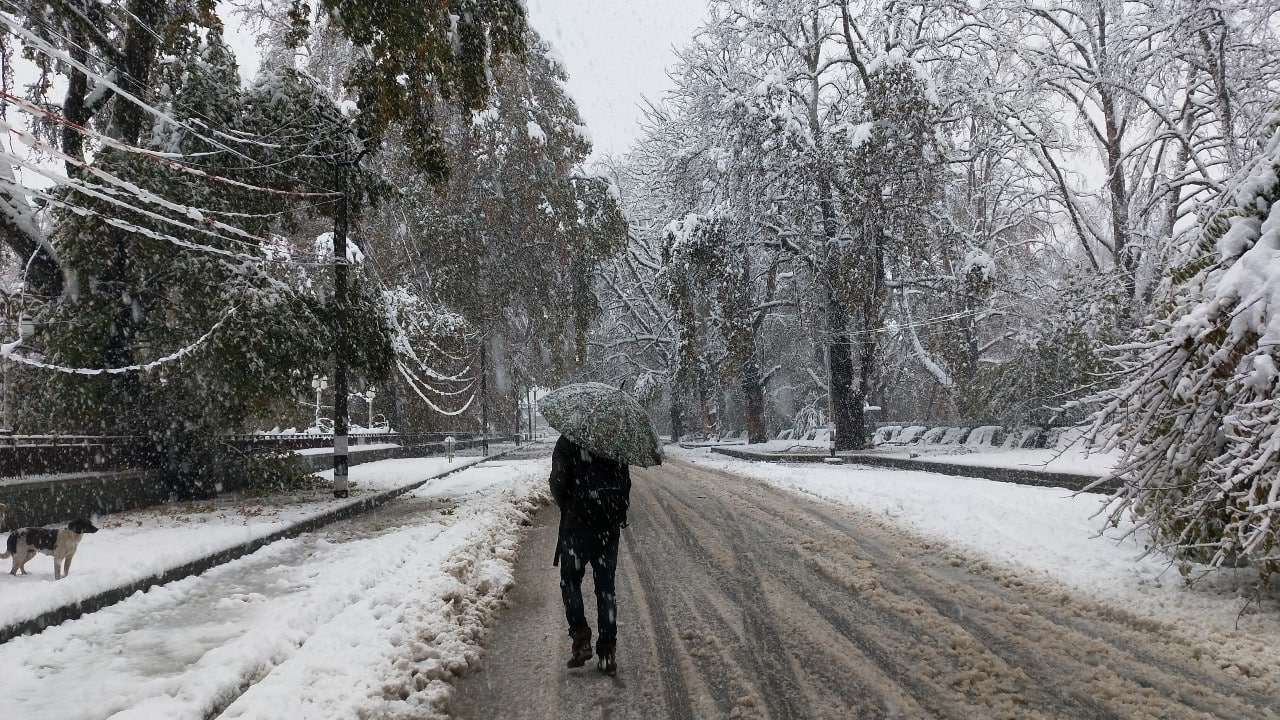
Chillai-Kalan is the 40-day period of harsh winter in Kashmir that begins December 21 and ends on January 31. Chillai Kalan is a Persian term which means "major cold". (Photo by Irfan Amin Malik)
In Kashmir, the Chillai Kalan is followed by a 20-day-long Chillai-Khurd (small cold), which lasts till February 19, and a 10-day-long Chillai-Bachha (baby cold), from February 20 to March 2. (Photo by Irfan Amin Malik)
In 2021, just as Kashmir was bidding adieu to Chillai Kalan on January 31, the mercury dipped. At minus 8.8 degrees Celsius, the Valley saw its coldest day in 30 years. (Photo by Irfan Amin Malik)
Before the harsh winter sets in, men and women in the hilly areas of Kashmir carry firewood to their houses. Large quantities of firewood are burnt in the hilly areas and rural areas of Kashmir for cooking, heating and other purposes. (Photo by Irfan Amin Malik)
During Chillai Kalan, water supply lines freeze and people in the Valley find it hard to get potable water. (Photo by Irfan Amin Malik)
Long icicles form in the branches of trees and roofs of homes. (Photo by Irfan Amin Malik)
During Chillai Kalan, the Dal Lake freezes, children play cricket on the surface of frozen lakes and rivers, and icicles form in the Chinar trees and apple orchards. (Photo by Irfan Amin Malik)
Water bodies, including the Dal Lake, freeze. On the other hand, the snow that falls during this period also replenishes the rivers, streams and lakes of Kashmir. (Photo by Irfan Amin Malik)
Children play cricket on the frozen surfaces of the water bodies. (Photo by Irfan Amin Malik)
People cover the windows of their homes with plastic to prevent the cold air from seeping in. The discomfort of the cold of Chillai Kalan is exacerbated by the erratic supply of electricity. (Photo by Irfan Amin Malik)
Kangris become indispensable for people who choose to stay back Kashmir. However, some families - especially those with elderly or very young or sick members - do leave for Jammu, Delhi or Punjab during the harsh winter. Hamams - rooms with limestone floors that are heated by burning firewood in the hearth - are also a go-to for those who stay on in the Valley, especially for worshippers who can sometimes spend hours praying comfortably in the cozy Hamams. (Photo by Irfan Amin Malik)
When the temperature drops, shopkeepers in the hamlets of Kashmir burn cardboard boxes on the roadside to stay warm. (Photo by Irfan Amin Malik)
Vegetables like beans, tomatoes, turnips, quinces, brinjals and bottle guards become the mainstays of many a meal when the Valley gets cut off from the rest of the country. (Photo by Irfan Amin Malik)
The mountains of Kashmir remain covered in snow until late Spring. Destinations like Gulmarg and Pahalgam look especially beautiful, attracting tourists. (Photo by Irfan Amin Malik)
The snow and ice of Chillai Kalan make the roads slippery, and cause hardships to drivers. The slippery roads also lead to a number of accidents every year. (Photo by Irfan Amin Malik)
A roadside vendor sells warm caps in Srinagar. Warm caps, mufflers, caps, and gloves are a common sight as temperatures dip below zero. With the onset of Chillai Kalan, the demand for Kangris—traditional fire pots—also increases. People use Kangris under their pherans (woollen cloaks), to keep themselves warm. (Photo by Irfan Amin Malik)
Discover the latest Business News, Sensex, and Nifty updates. Obtain Personal Finance insights, tax queries, and expert opinions on Moneycontrol or download the Moneycontrol App to stay updated!








